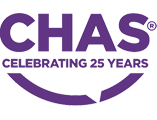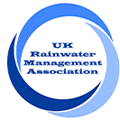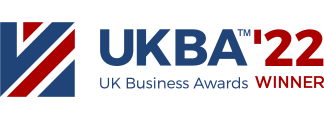A guide to Non-Pressurised Rainwater Harvesting Systems
24/10/2023

24/10/2023
Rainwater Harvesting is not a new concept, but the technologies that make rainwater harvesting systems work in commercial properties are constantly developing according to the needs of the industry. Understanding the different ways of achieving rainwater harvesting is an increasingly important tool in the development of sustainable water infrastructure and the safeguarding of UK water supplies.
Water is a hot topic within the built environment sector and has often been treated as an afterthought when compared to other sustainable technologies. Now, everyone is beginning to ‘wake up to water’ and realise that without a suitable water supply, planning applications may be refused or development restricted. Technologies like rainwater harvesting provide long-lasting infrastructure to facilitate reduced reliance on water that is treated to drinking water standards. Rainwater harvesting can provide a secondary supply of water that is reused from rainfall. Systems can be used for non-potable use where drinking water standards are not required.
Managing rainfall as close to where it lands as possible is favored by many water companies who will experience reduced runoff from sites into their combined sewer networks and reduced demand for potable water.
The term ‘non-pressurised’ simply refers to the method by which rainwater harvesting is achieved. Non-pressurised rainwater harvesting systems are also known as ‘gravity-fed’ systems across the industry. Traditionally, a non-pressurised rainwater harvesting system would have relied on a header tank to gravity feed to points of use across the building. Whilst this arrangement of system is successfully working across many sites across the UK, newly constructed buildings do not have any bodies of water located at high levels to reduce legionella risk. Legionella is more likely to develop in hotter areas; therefore, loft or high-level plant rooms are more susceptible.
Now, newer buildings with a non-pressurised rainwater harvesting system have a secondary break tank located at low level. Rainwater stored in this break tank is then boosted around the building via a booster set. Additional UV filtration can be added to reduce legionella risk even further.
You may be wondering why a secondary break tank is needed, and this is a perfectly valid question when there is a main storage tank that stores the majority of rainwater collected from the area. A secondary break tank facilitates a backup should the facility experience a supply interruption from the main storage tank. This arrangement is also not reliant on a pressure vessel which is more prone to failure should the vessel not receive regular maintenance.
Unless specified otherwise by a consultant, Stormsaver Systems are sized with an internal break tank to have 1 hours’ worth of backup water should a failure occur. Other systems may have less backup capacity to save on costs. Always check your proposal as this can have huge operational impacts for the end user of the building. The internal break tank also houses an automatic mains water top-up for periods of low rainfall.
Non-Pressurised Rainwater Harvesting Systems are commonly installed in commercial properties where there is a large demand for water across the site. This type of rainwater harvesting system is well-suited to sports stadiums, music venues, and leisure centres as they can provide high flow rates when compared to other system arrangements.
Just like any other type of rainwater harvesting system, the system can provide a sustainable water supply for non-potable use, including, toilet and urinal flushing, irrigation systems, vehicle wash down, manufacturing processes, cooling, and many other processes.
Non-Pressurised Rainwater Harvesting can achieve water savings of up to 75% if the system is sized correctly by a specialist.
Stormsaver can supply two types of control panels for non-pressurised rainwater harvesting.
Automatic backwash panel – automatic backwash filters eliminate the requirement for physical changes of a traditional cotton wound filter. End users of systems always prefer automatic backwash filters as they are not required to replace or purchase new filters once the filter medium becomes blinded with debris from the rainwater supply. This option is recommended for building specifiers.
Standard control panel – this type of control panel is the most cost-effective means of achieving non-pressurised rainwater harvesting but does not include the automatic backwash filter; therefore, requires more maintenance by the end user.
Of course, the non-pressurised arrangement is available with the main storage tank as an above-ground or below-ground tank. Above-ground arrangements are typically used where external space is limited as the above-ground tank can be installed in an internal plant room space.
Why choose a Stormsaver System?
Stormsaver offer a fully accredited CPD session for consultants and architects to find out more about water reuse. We can also help you to size the rainwater harvesting system, just get in contact with our team here.

My role as a Water Reuse Specialist means I get to keep up to date with all things water conservation. My favourite water saving tip is to turn taps off when brushing your teeth! I think rainwater harvesting and the water reuse industry is exciting, and I love sharing updates with our customers. View Matt’s Stormsaver profile here.
Terms & Privacy Policy Cookie Policy Site Map
Copyright © 2024 Stormsaver Ltd. All Rights Reserved.





